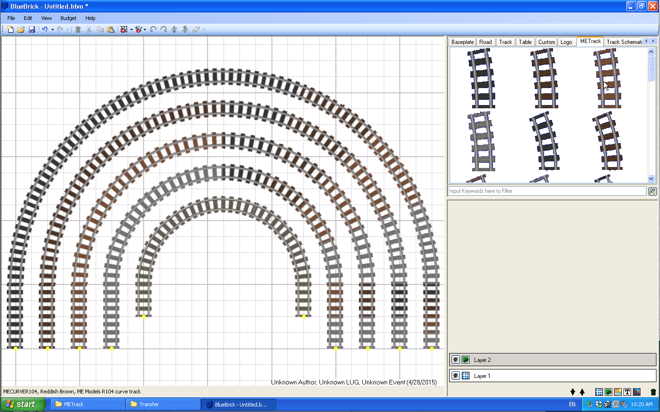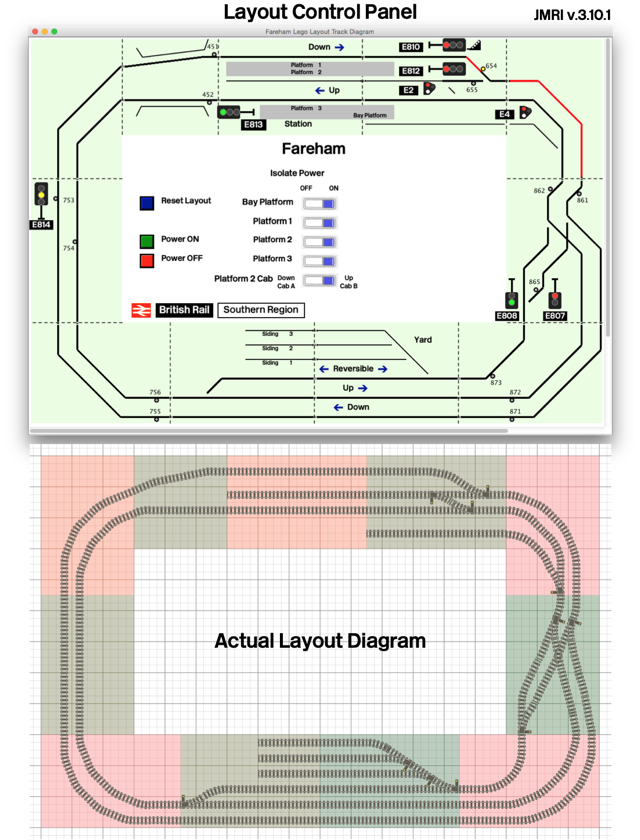April 2015
BlueBrick ME Track Libary Update v.1.2
28/04/15 10:45 Filed in: News

I have updated the ME Models track components library to include all of the available sleeper/tie colour choices made by ME Models. These include all of the R104, R88, R72, and R56 curves as well as the double, full and half straight components. All of these components are rendered in 4 colours: Black, Dark Bluish Gray, Dark Brown, and Reddish Brown. Each colour will be identified correctly for the purposes of compiling a Bill of Materials for your layout, with the exception of Dark Brown. BlueBrick does not identify the LDraw colour code (308) for dark brown and therefore it is indicated as an unknown colour. Hopefully a future update of BlueBrick will remedy this very minor issue. For your convenience you can download each colour as a separate library or you can download the entire collection in a single zip file. Head over to the resources section to download this updated library.
Happy layout planning!
Updated Layout Control Panel Using JMRI
22/04/15 18:17 Filed in: Information

Here is an updated version of my layout's control panel implemented using JMRI, an open source model train software tool.
I have evolved this control system to include the full layout (including the yard switches) and more importantly to include "Train on Track" sensors. With these sensors, the signal system is now fully automated and interlocked. As a train passes a signal, it trips a sensor and the signal immediately changes to "Danger". The signal will progressively clear through "Caution" and "Proceed" aspects depending on the state of the signal blocks ahead.
Initially I was going to implement the train detection using a current feedback sensor on the power feeds to the track (similar to the prototype's track circuit). However, I wanted this system to operate with non metal/9V/DCC powered trains, i.e. battery/Power Functions trains. Therefore, I elected to use optical sensors embedded discretely in the track. The sensor consists of a 3mm phototransistor which is buried in a hole drilled within the ties. The sensor detects light being blocked by the presence of a train passing overhead. Each sensor is tunable to account for varying ambient light conditions depending on where the layout is setup.
The sensors as well as the actuators for the signals and turnouts are all connected using MERG's C-bus network. There are at least 16 different micro controllers lurking under the layout tables all communicating via C-bus to a central controller connected to my laptop PC via USB. The same central controller has an integrated DCC command station which drives the track power. Therefore, even the control of trains is achieved with the computer via virtual "throttles". It isn't too difficult to imagine the next step: complete automation of train operation! Well, not so fast, I still like to drive my trains too!
JMRI is a very powerful software suite of tools; however, it has a steep learning curve. For those of you with a technical interest, it is worth checking out.